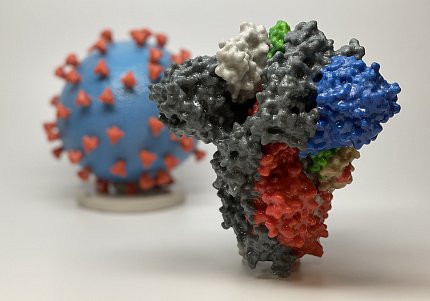NIH Scientists Discover Key Pathway in Lysosomes that Coronaviruses Use to Exit Cells

Photo: 3dprint.nih.gov
Researchers at NIH have discovered a biological pathway that the novel coronavirus appears to use to hijack and exit cells as it spreads through the body. A better understanding of this important pathway may provide vital insight in stopping the transmission of the virus—SARS-CoV-2—that causes Covid-19 disease.
In cell studies, the researchers showed for the first time that the coronavirus can exit infected cells through the lysosome, an organelle known as the cells’ “trash compactor.” Normally, the lysosome destroys viruses and other pathogens before they leave the cells. However, the researchers found that the coronavirus deactivates the lysosome’s disease-fighting machinery, allowing it to freely spread throughout the body.
Targeting this lysosomal pathway could lead to the development of new, more effective antiviral therapies to fight Covid-19. The findings, published Oct. 28 in the journal Cell, come at a time when new coronavirus cases are surging worldwide, with related U.S. deaths nearing 225,000.
Scientists have known for some time that viruses enter and infect cells and then use the cell’s protein-making machinery to make multiple copies of themselves before escaping the cell. However, researchers have only a limited understanding of exactly how viruses exit cells.
Conventional wisdom has long held that most viruses—including influenza, hepatitis C and West Nile—exit through the so-called biosynthetic secretory pathway. That’s a central pathway that cells use to transport hormones, growth factors and other materials to their surrounding environment. Researchers have assumed that coronaviruses also use this pathway.
